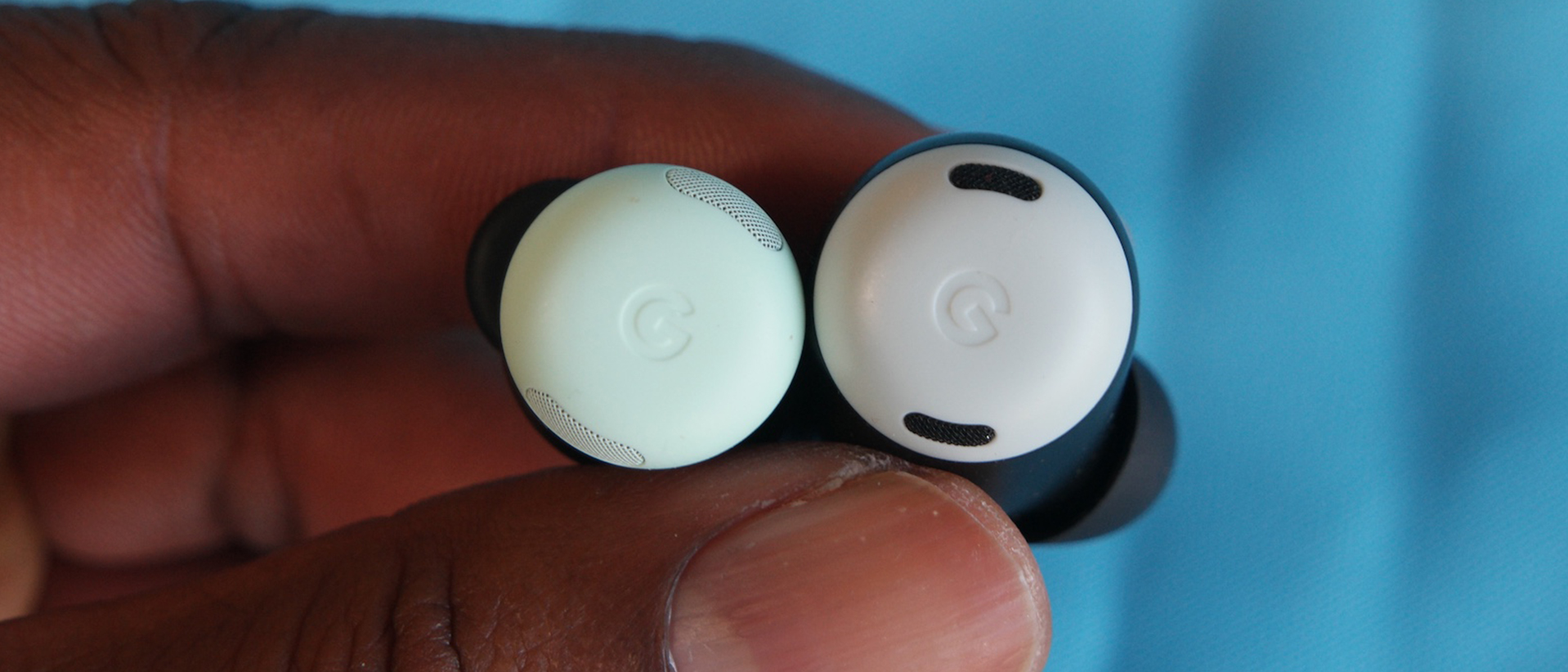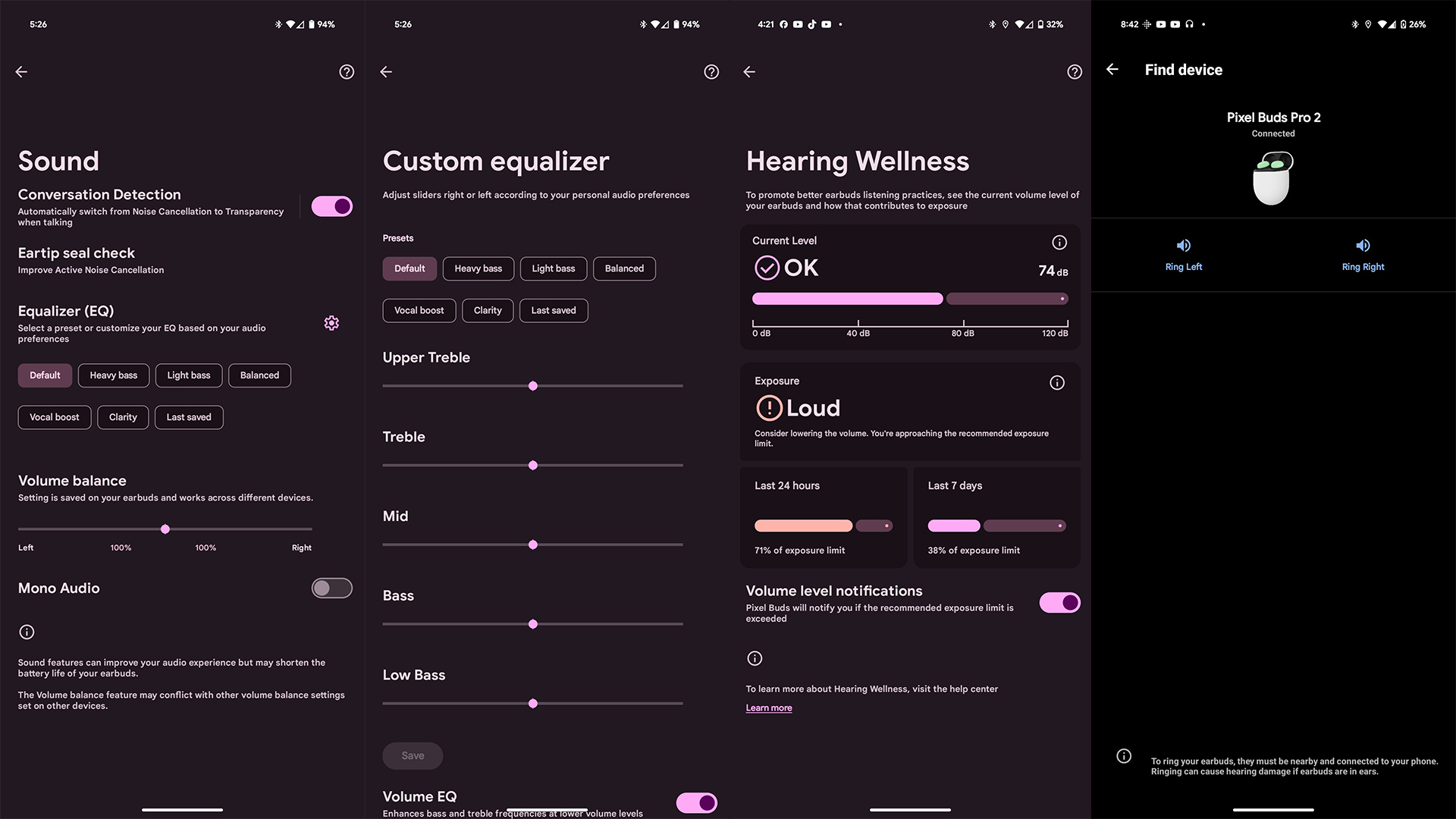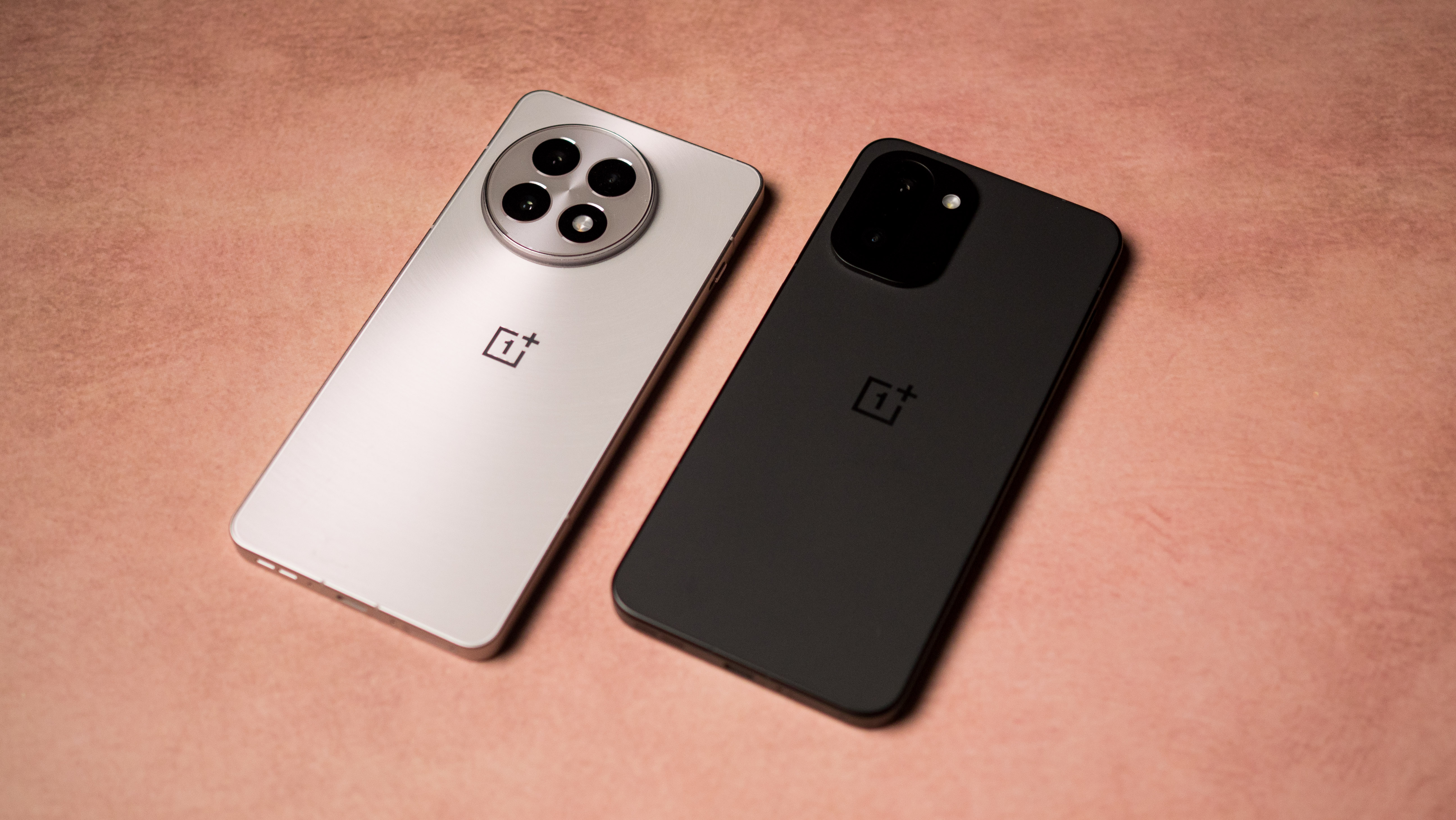Android Central Verdict
Google’s new Pixel Buds Pro 2 are teeny tiny, yet they pack a big punch! Gemini AI, rousing sonics, and remarkable improvements over the previous generation Pixel Buds Pro make them easy to recommend, especially for anyone invested in the Pixel ecosystem.
Pros
- +
Google Gemini integration is very cool!
- +
Highs and sub-bass extension are great
- +
Volume level/power output is excellent
- +
Robust app with EQ options
- +
Supremely comfortable
- +
Beautiful colors
Cons
- -
Gemini growing pains
- -
Pixel Buds app “Find device” ringtone volume
Why you can trust Android Central
There are many instances where I’ve reviewed the latest generation of a product, and the improvements feel like they’re only marginally better than the last. Not so with the Google Pixel Buds Pro 2. Not only are they more intelligent than before, Google also upped the quality in other key areas.
Most importantly, I think they’re a pair of earbuds that everyone, from Classical music lovers to hip-hop heads, can thoroughly enjoy. There’s a lot to get to, so read on to determine if these should be your next earbuds purchase.
Google Pixel Buds Pro 2: Price and availability

Google Pixel Buds Pro 2 were announed on August 10 and go on sale for general purchase September 26. They’re available via Google’s website and other online retailers for $229 in the U.S., €249 in Europe, and £219 in the UK.
It should be noted that the Pixel Buds Pro 2 are launching for $30 more than the previous generation buds, but with the improvements and new features, we don’t think that’s a terrible thing.
You can pick them up in four colors: Porcelain, Peony, Hazel, and the color we’re reviewing here, Wintergreen.
| Categories | Google Pixel Buds Pro 2 |
|---|---|
| Conectivity | Bluetooth 5.4; LE Audio, Super Wideband |
| Speakers | Custom-designed 11 mm dynamic speaker driver |
| Codec support | SBC, AAC, Opus |
| Battery life | Up to 8hrs w/ANC on, 12 w/ANC off |
| Charging | USB-C, Qi charging support |
| App support | Pixel Buds app |
| Microphone | Three microphones each earbud |
| Durability | Earbuds: IP54 Case: IPX4 |
Google Pixel Buds Pro 2: What I like

I’m calling this an “early review” because I’ve spent a solid amount of time testing audio and call quality. However, including AI and all that it enables requires more time to sit with and experience its many potential practical applications. This is the early stage for truly intelligent, conversational AI assistance. With that said, there’s a lot on offer here, so let’s get some background out of the way because it will inform the rest of the review.
To fully experience the Pixel Buds Pro 2, you'll need a Pixel phone. For some features, that means a Pixel 6 or later, and none of the “A” series phones are included.
Get the latest news from Android Central, your trusted companion in the world of Android
Enabling the intelligence is a first for Pixel Buds, thanks to the inclusion of one of Google’s proprietary chipsets, the Tensor A1, which also bolsters the noise canceling and call quality by processing audio 90 times faster than the speed of sound, according to Google. I couldn’t test that, though, as my supersonic fighter jet is in the shop this week. Additionally, the more efficient processing means better battery life despite the buds being smaller than last year.
Bluetooth 5.4 is along for the ride, with support for Bluetooth LE. Hopefully that means Auracast is in the Pixel Buds Pro 2’s future. Google also overhauled the acoustic housing and the driver, so this year you get a custom 11mm dynamic speaker in the tiny, tiny buds.
The USB-C charging case is wireless charging enabled and is rated IPX4 for water and dust resistance, while the buds are rated IP54.
Small buds. Big features. Big sound.
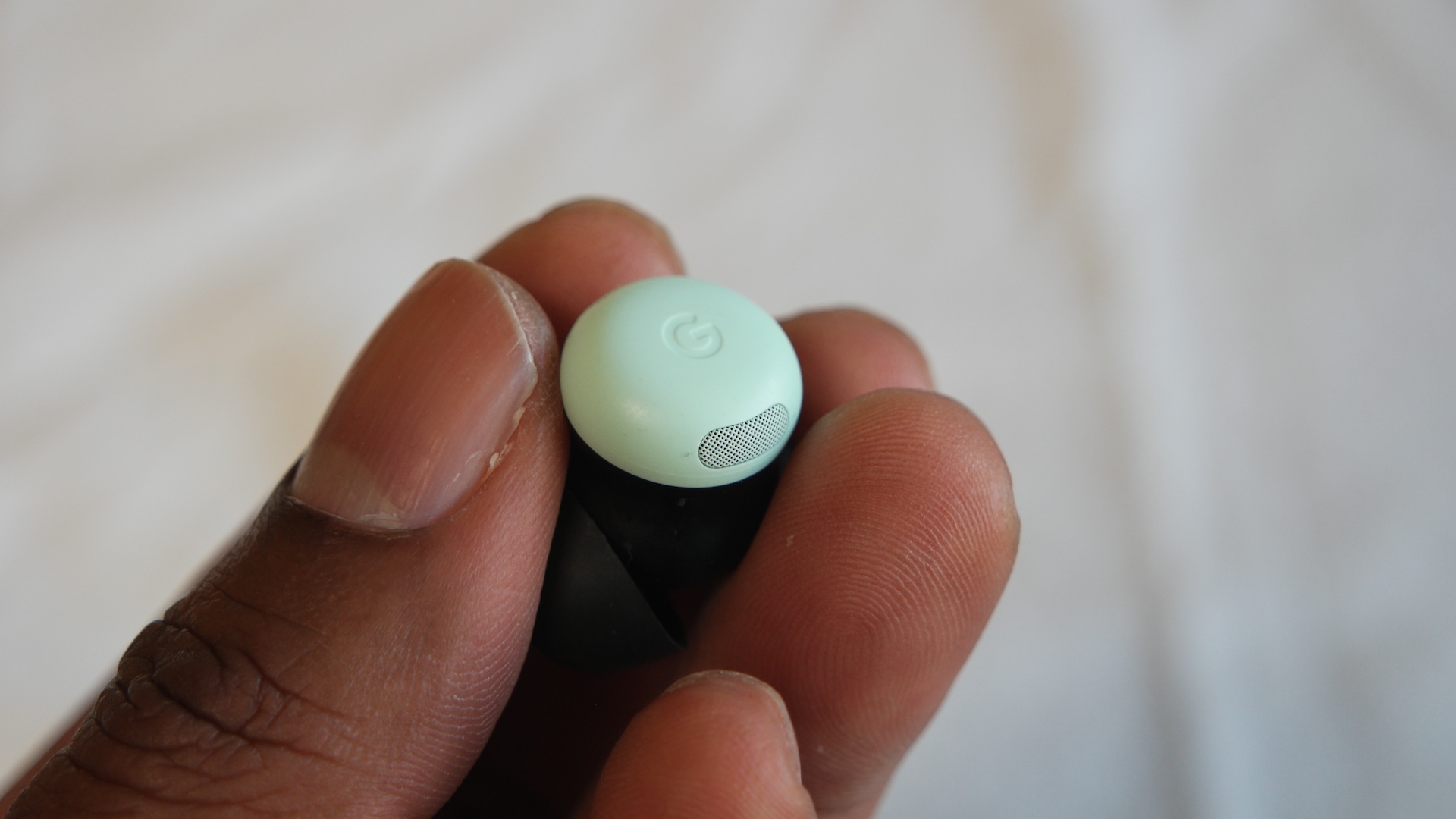
It’s the technical things we briefly touched on that power what I’ve experienced during this review. The Pixel Buds Pro 2 are better than the previous-gen Buds Pro in every way. I tested the noise-canceling with 80dB of airplane cabin noise and walked in busy metropolitan areas during rush hour.
The Buds Pro 2 definitely hush a broader spectrum of sound than before. That’s lows and highs! They don’t cancel quite as much as Sony or Bose, which are both $70 more, but the Buds Pro 2 aren’t a slouch in this area either.
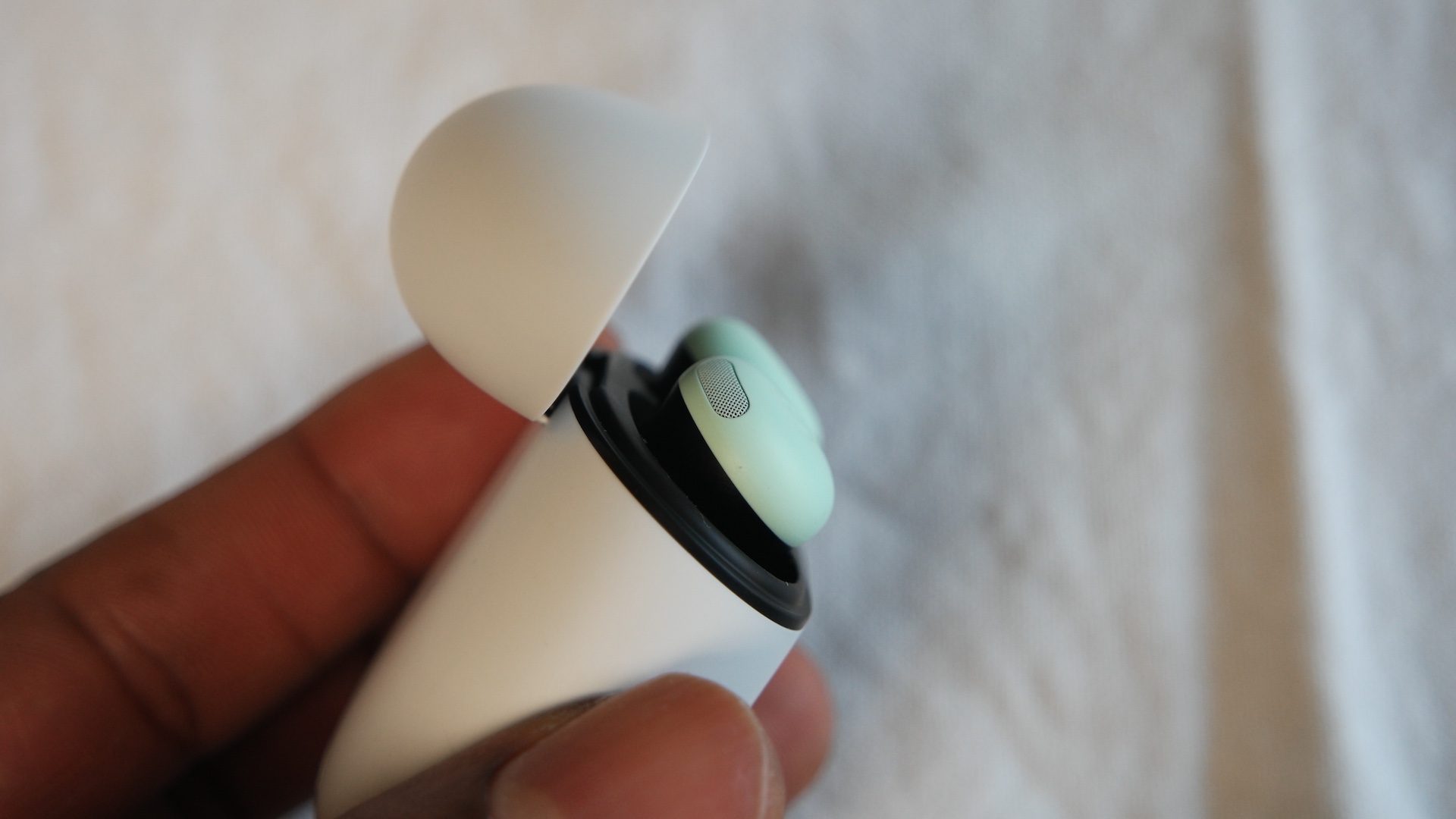
There are welcome refinements that help get to the place where I could test that improved active noise canceling with Google’s Silent Seal 2.0 tech. Removing the buds from the case is easier than ever, thanks to them sitting above the deck of the area they’re seated in. It sounds like a small thing, but I can’t tell you how many earbuds I’ve dropped trying to wiggle and finagle them out of their magnetized housings.
Walking around the city and testing these for hours has been supremely comfortable, with a locked-in feel. Google put a lot of research into their new twist-to-adjust stabilizer fit, and it shows—er, feels.
I’ve yet to experience any ear fatigue, and I’ve worn them during my entire eight-hour shift at the day job. Though not continuously streaming music or working all day with ANC activated, they’ve easily lasted that entire eight hours with plenty of battery life left. I’ll need more testing to understand better how hard I can push them before placing them back in their case for a top-up. Five minutes of charging in the case provides 1.5 hours of listening time with ANC off if I need it. That said, there’s a footnote to this experience.
I’ll need more time testing the battery in real-world use as firmware upgrades may change things. Sitting at my desk for some focused testing today, an hour of ANC use at 50% of max volume kills roughly 20% of the battery in the right earbud and 10% in the left. Google claims up to eight hours of listening time with ANC on, but at that rate, somewhere around 5 hours would kill one earbud, leaving you with 50% left in the other, and that doesn’t quite add up.
The touch controls are very responsive, and to Google’s credit, they don’t suffer from an issue that many do: false touches. I’ve adjusted them in my ears a few times here and there while listening to music, and not once have I paused or skipped a track accidentally. Those adjustments were while getting used to the fit and feel and finding the right feel for me. Once I had that right, they didn’t budge during a 3.2-mile ruck (a hike or brisk walk with a weighted backpack or plate carrier), even as I got sweatier during my city march.
Admittedly, I was impressed with the consistency of the press and hold action for switching between the ANC and Transparency modes when my hands were dry and when they were a bit moist from wiping sweat from my brow.
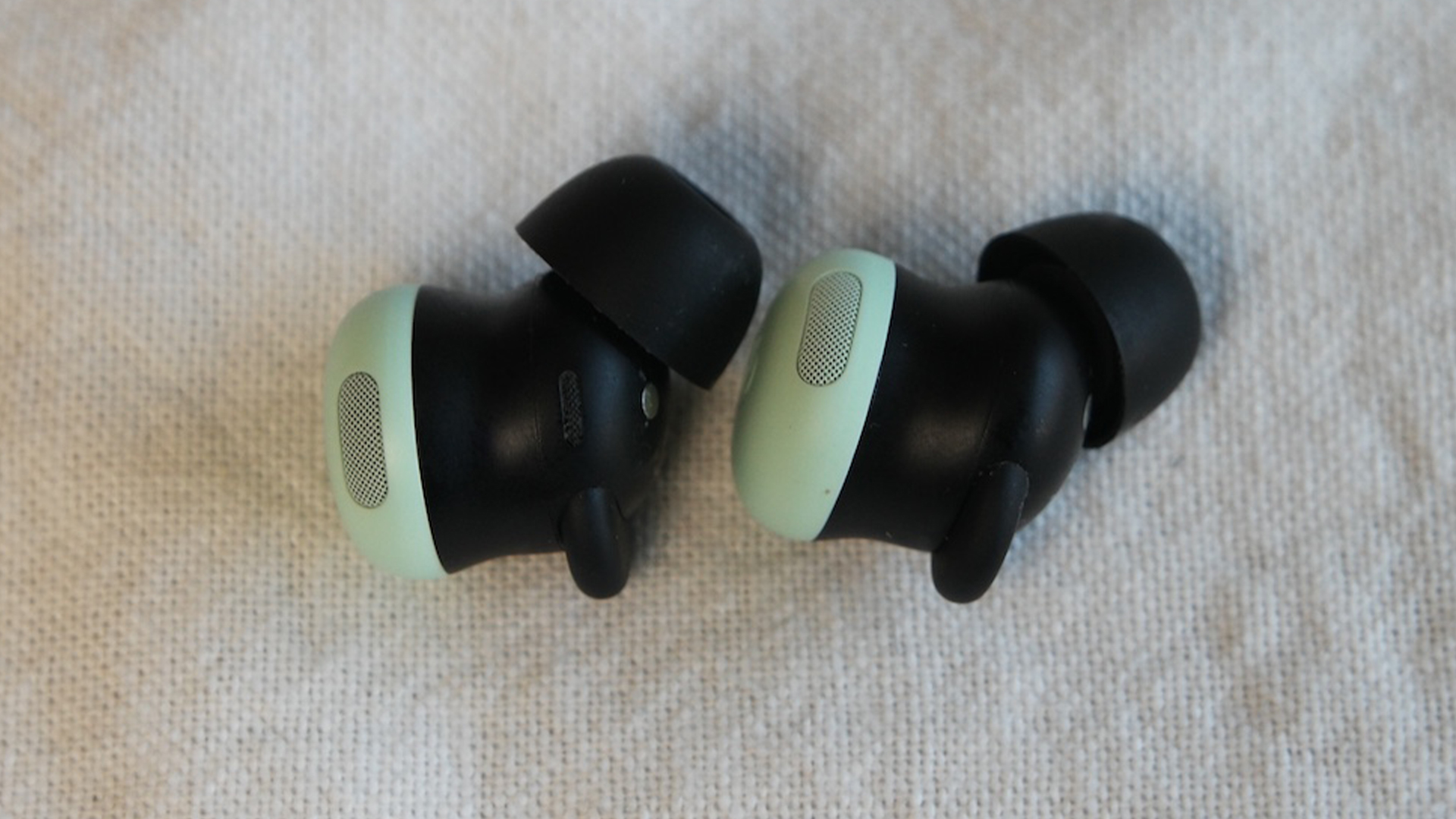
I ran into an interesting phenomenon when putting sound quality to the test. While I’d like to see LDAC or AptX Adaptive support, another hi-res coded, Opus, is supported. When I played tracks and went into developer mode, Opus was an option. But every time I tapped on it, I’d see it switch for a nanosecond, then default back to AAC.
The other interesting item was the sound quality of different apps. Playing .flac files via VLC media player sounds just ok. Tidal is solid sometimes, then just ok at other times. I’ve said it before with other earbuds; many times on Android, YouTube Music has the most volume. I even had to double-check developer settings to be sure that Opus hadn’t finally kicked in and stuck because the muddiest track known to humankind, Method Man’s “Biscuits,” was reproduced with nuances in the track, vocals, and backing vocals that I’d forgotten about. Playback from YouTube Music has an interesting level of range and clarity you don’t quite get with playback from other apps.
I even had to double-check developer settings to be sure that Opus hadn’t finally kicked in and stuck because the muddiest track known to humankind, Method Man’s “Biscuits,” was reproduced with nuances in the track, vocals, and backing vocals that I’d forgotten about.
I used that app in my testing, and the Pixel Buds Pro 2 don’t disappoint on any level with any genre.
The bass and sub-bass extension are beautiful when listening to Skrillex’s “Mumbai Power.” The Buds Pro 2’s give you solid rumble and growl, delivering that deep, dark sub-bass. If it’s air and clarity you’re after, then listening to Paul Simon’s “Diamonds on the Souls of Her Shoes” is it! Ladysmith Black Mambazo’s a capella solo, and Paul Simon’s vocals are big and airy, while the drums and guitars all fill their space and frequencies just like they should. Charles Mingus’ Mingus Big Band ‘93 “Nostalgia in Times Square” played back as a vibrant big band jazz romp with beautiful instrumentation, layering, and separation in the stereo image.
Sylosis’ “Poison for the Lost” is a death metal delight when played through the Pixel Buds Pro 2, as is “Toxicity” from System of a Down. Changing speeds, “Violin Duel” from the Chevalier OST is wonderfully reproduced. You get the string and bow tension in those mids and highs, along with the occasional fingering of the frets. Oh, wait. Violins don’t have frets. You get the point.
Along with the new acoustic architecture and dynamic driver, the solid choice of listening customizations makes the audio experience special. Using the 5-band EQ, I created a custom preset that honed in on the music the way I like to hear it and elevated the listening experience. And while the Pixel Buds Pro 2 are definitely warm at the bottom, they are still very good about clarity in the mids and high-end frequencies.
Spatial audio with head tracking is very well implemented, as evidenced when I cued up “An Unexpected Element” from “Blue Eye Samurai.” Taiko drums were boomy, the dialogue was clear and crisp–as were the clangs of the sword sound effects–and the effect of surround imaging was well rendered. To be frank, this was one of the best mobile listening experiences of that episode of Blue Eye Samurai, aside from watching it on an iPhone with Apple earbuds and their spatial audio implementation.
One final note on the music and entertainment experience: Far too many earbuds have weak output over Bluetooth but the Pixel Buds Pro 2 really don’t need to be turned up much past 50% of max volume to be at a comfortable listening level. If you want to immerse yourself in some audio, there’s plenty of headroom to crank things up a bit and hear as much sonic nuance as these earbuds can convey. It isn’t audiophile grade, but it is one of the best experiences I’ve had this year with a pair of earbuds that weren’t utilizing a Hi-Res Bluetooth codec.
Gemini: Star Trek is here! Almost

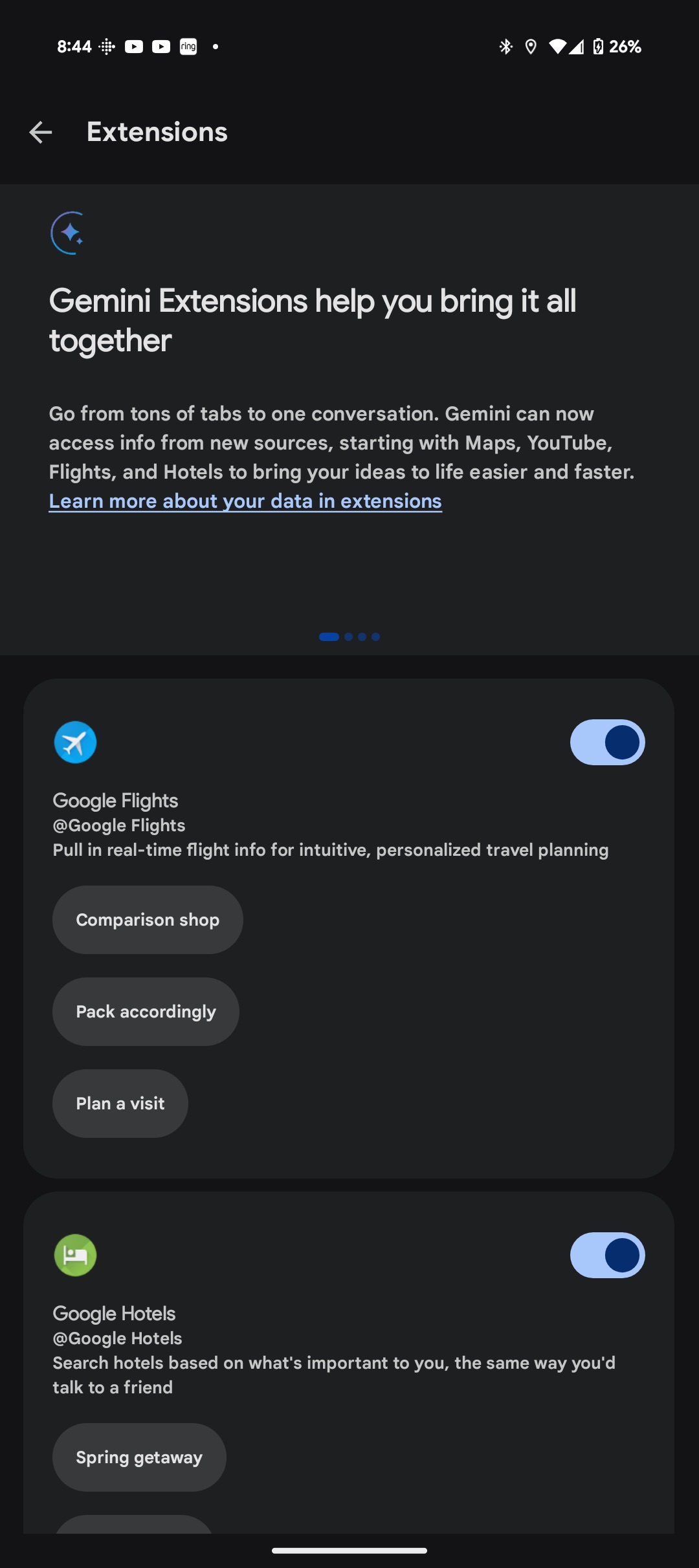



Computer: Who’s the best captain in the Star Trek series, and why is it Benjamin Sisko? Using Gemini Live with the Pixel Buds Pro 2 and Pixel 9 was a revelation. Siri, Google Assistant, and Alexa are all cool, but they do not carry on a useful, functional conversation.
Gemini Live is now a free function that allows you to have free-flowing conversations, which includes the ability to interrupt when you have follow-up questions/queries. On the way to work one morning, I queried Gemini regarding a venue where my wife is going to be holding a pop-up event this week and got very useful background info on it. Another time, a status light that I hadn’t seen before turned on in the dashboard of my car, so I queried that, and Gemini told me all about it, including multiple reasons why it might be on and what to do based on which potential reason the light was activated.
The standard Gemini query doesn’t involve a running conversation and is Google Assistant-like but more intelligent. Both of these implementations of AI can draw from other apps on your device, like Gmail or Google Maps, so there’s plenty of functionality to be had. I’ll need more time to really play with and test this out in different driving or working scenarios, but at this time, early in the life of this technology, it is absolutely amazing. For the most part. I’ll touch on some of the pitfalls in a moment.
Pixel Buds app

The last chapter in this audio novella is about the Pixel Buds app. It’s full-featured and gives you many options to tailor your overall experience, from the gesture interactions to the experience with the digital assistants and the sound quality. There are five EQ presets in the Sound menu, with the ability to customize one. You can’t save multiple customized presets, but at least the one you can have is saved to the earbuds themselves, so if you connect to another device that doesn’t use the Pixel Buds app, your sound will still be tailored to your liking.
Then, there’s the option to turn on Conversation Detection. Using AI, the Pixel Buds Pro 2 will hear when you’re talking and automatically pause your music and switch to Transparency mode if necessary. Then, when you’re done speaking, they’ll go back to ANC (if that was the mode prior to detecting speech) and resume your music. This feature works flawlessly in my testing, with one caveat: rocking out! Yes, when you’re so into your music that you begin singing with it, your music will pause. This happens to me often when I’m out for a more leisurely walk and really get into my music. In the future, I’d love a quick setting or voice command to deactivate this feature on the fly.
The app also contains settings for customizing the digital assistant, Spatial Audio, and touch controls. Here, you’ll also find the feature that allows you to use the local “Find device” feature to ring each earbud independently. However, to locate them on a map, you’ll have to go to the separate Find Device app.
The app also has a Hearing Wellness menu that shows you your current level in dB and whether it’s safe for your hearing. You’ll also see when you’re getting close to your overall exposure limit for the last 24 hours and the last seven days. Then, there’s a toggle to turn on or off volume-level notifications so that you’ll be alerted when you exceed the recommended exposure limit.
Last note for this section: call quality is solid. My voice is always clear, despite rush hour traffic whizzing by me on the streets, and I don’t sound like I’m in a tunnel, according to callers on the other end. I also used the stock sound recorder app on the Pixel 9, and the microphone audio recorded clearly and without any background traffic noise. The real question is: how often do you use your pocket computer as a phone?
Google Pixel Buds Pro 2: What's not so good

The experience with the Google Pixel Buds Pro 2 has been overwhelmingly positive, but there are some areas where improvements can be made. I’m going to work on this Opal hi-res audio implementation, but as I mentioned before, I’d love to have seen LDAC or AptX Lossless support.
The fit has been very comfortable, but it’s also a bit of an anomaly. The posts the ear tips are connected to must be very small because I have to do something I never do with earbuds: use large ear tips. Normally, I have to use small or extra-small ear tips. I have tiny ear canals, so I wonder if those with larger ear canals will find the fit with the large ear tips too small.
This is less of an issue with the buds, but Gemini can have that split personality that your favorite person born under the Gemini Zodiac sign has. Yes, you. One evening I queried it about the best turkey burger in a particular city. It gave me amazing information, and I was ready to go. Out of curiosity, I tried the query again and got completely different results. Add to that, because I was using Gemini Live, it required me to then tell Google Assistant the name of the restaurant so that I could get GPS driving directions. You don’t have to perform this step with the standard Gemini query, but with Gemini Live, I found that I did.
I should also note that as this article is being published, I’m working with Google to sort out an odd issue. The Find Device app consistently shows an old location from a few days ago. It won’t update the location of the buds and I don’t yet know why. Sticking with finding your buds, the ringtone played through the buds themselves, using the “Find device” feature in the Pixel Buds app is pretty low, so if the buds are between some couch cushions, you may not hear them.
Google Pixel Buds Pro 2: Competition

There is a lot of competition in the TWS earbud space, but for now, I’ll focus on those that are part of an ecosystem of products. That means competition comes from Samsung’s Galaxy Buds 3 Pro, Nothing Ear (2024), OnePlus Buds Pro 3, and, technically, the Sony WF-1000XM5, though their phones haven’t been huge sellers.
This is an interesting comparison because the “competition” really depends on which phones and watches you’re fond of as well. On features alone, Samsung and Nothing, with their AI implementations, are direct competitors, but Nothing comes out ahead in price, costing almost $80 less than Google’s offering and $100 less than Samsung’s. Nothing’s Ear has been one of my favorite buds of 2024 for its value, but Google’s Gemini implementation one-ups its ChatGPT integration. In terms of sound quality, they’re all solid, but by degrees, I’d give that win to Nothing and Samsung. The difference isn’t good enough to be a deciding factor, though.
Google Pixel Buds Pro 2: Should you buy them?
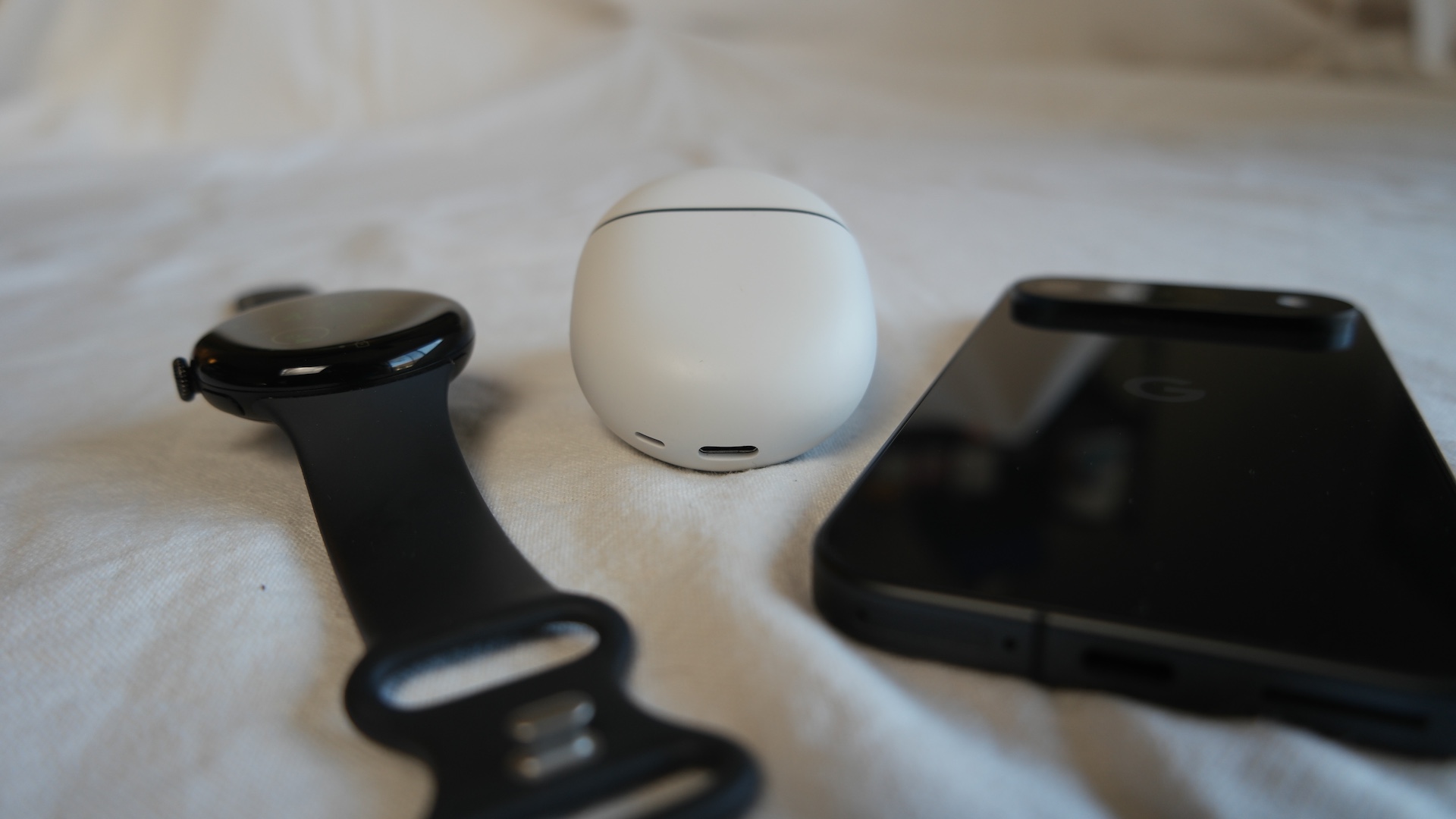
You should buy the Google Pixel Buds Pro 2 if…
- You own a Pixel 6 or later (not an “A” series device)
- You’re invested in the Google ecosystem
- You want high-quality, lightweight earbuds
- You have a Pixel phone that supports Gemini and Gemini Advanced
You shouldn’t buy the Google Pixel Buds Pro 2 if…
- You don’t care about the AI integration
- You aren’t in the Google ecosystem
- Your budget is around $150 or less
Google has done it with its Pixel Buds Pro 2 TWS earbuds. They are light, comfortable, and feature-packed, and Google Gemini is the digital assistant many of us have been waiting for since the first time we watched an episode of Star Trek. Most importantly, though, the sound quality is top-tier for this space.
Google continues to improve its mobile products and, ultimately, its ecosystem, making this a space to watch as both these buds and the Pixel Watch 3 have been much-welcomed improvements over previous generation devices.
Thanks to these latest innovations, the competition in the ecosystem space is heating up, with wonderful options at different price points, which is always good for us consumers.

Small buds, big features and sound!
There's a lot to like about the Google Pixel Buds Pro 2. They sound great-the bass response is delightful, the ANC is solid, call quality is great, and Gemini is like something out of a comic book.

Tshaka Armstrong is a nerd. Co-Founder of the non-profit digital literacy organization, Digital Shepherds, he’s also been a broadcast technology reporter, writer and producer. In addition to being an award-winning broadcast storyteller, he’s also covered tech online and in print for everything from paintball gear technology, to parenting gadgets, and film industry tech for Rotten Tomatoes. In addition to writing for Android Central, he’s a video contributor for Android Central and posts everything else to his own YouTube channel and socials. He blathers on about his many curiosities on social media everywhere as @tshakaarmstrong.
You must confirm your public display name before commenting
Please logout and then login again, you will then be prompted to enter your display name.
